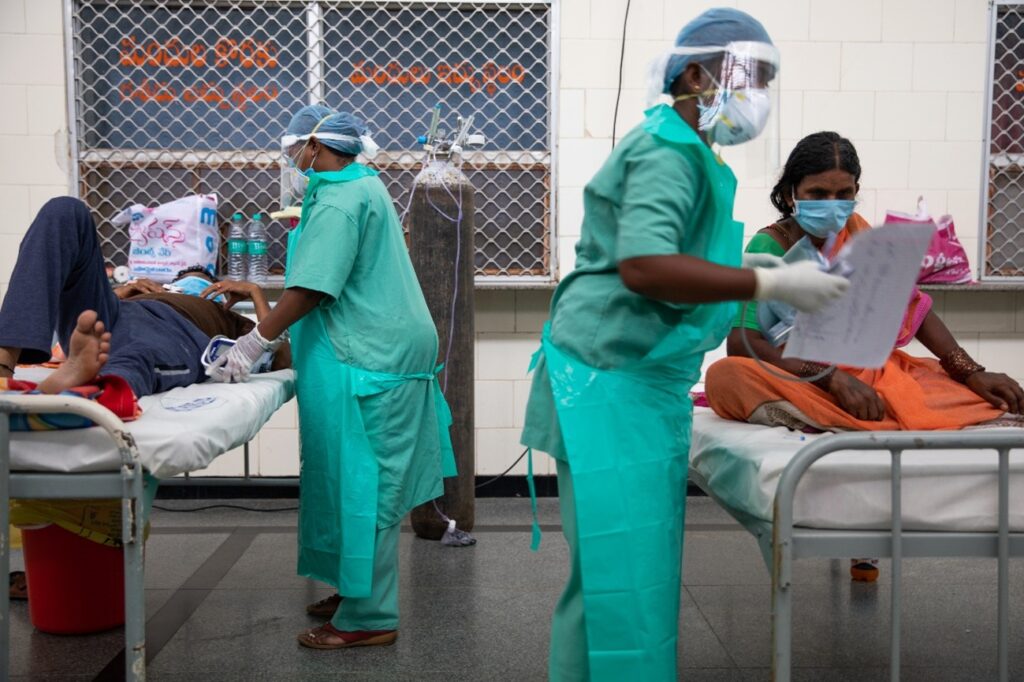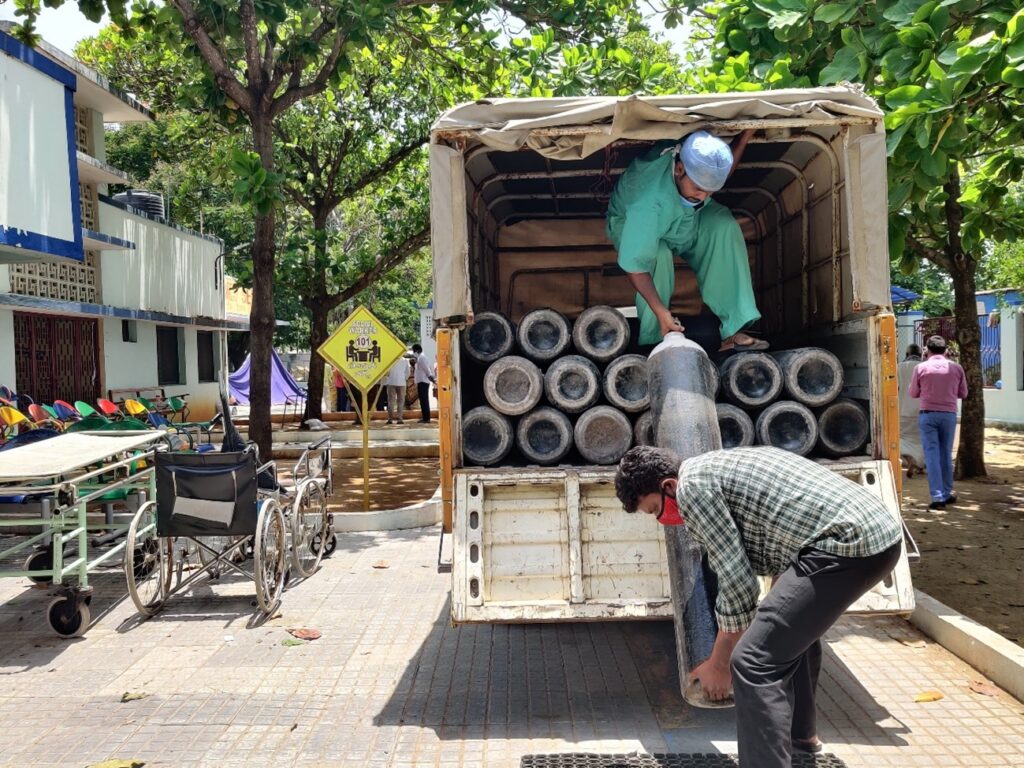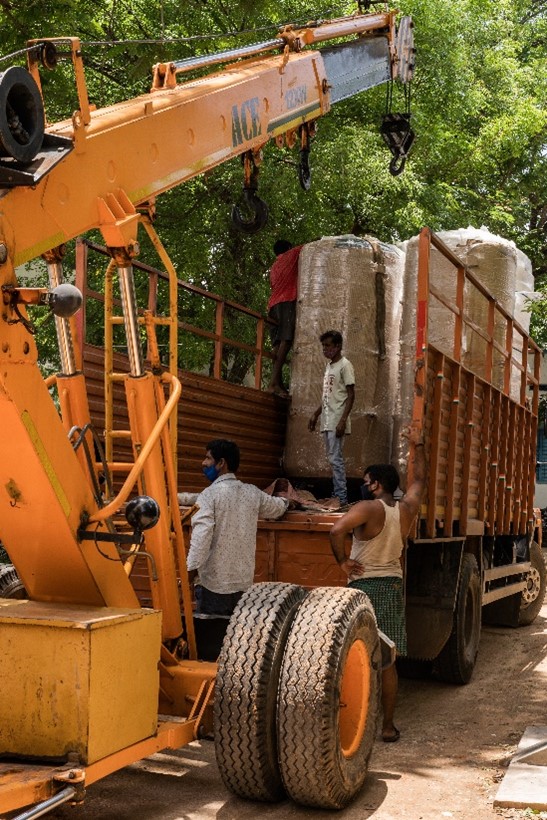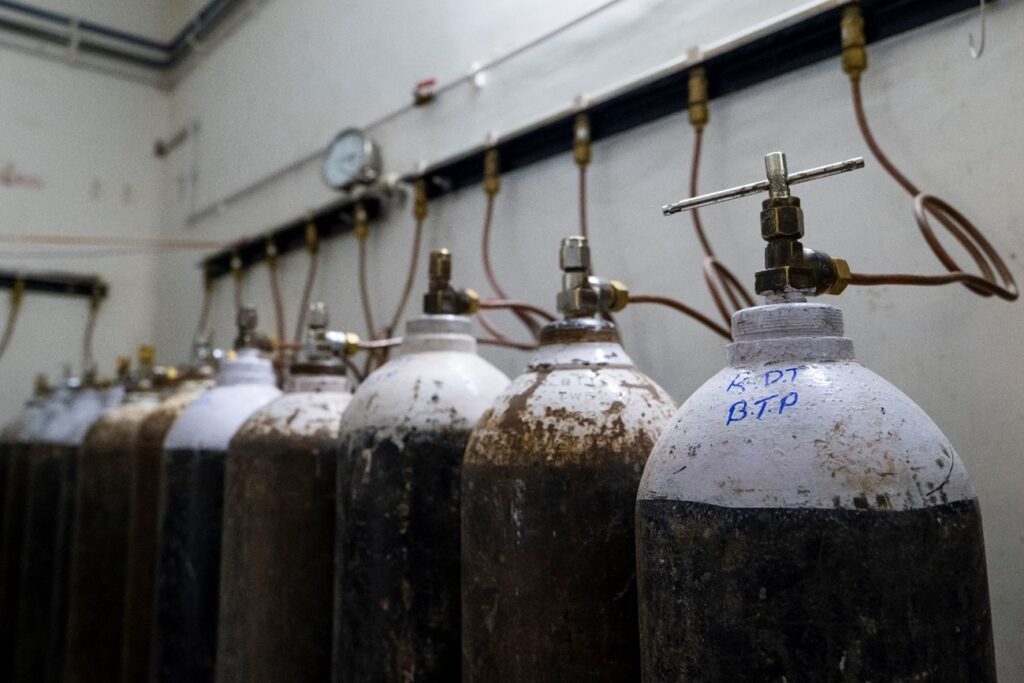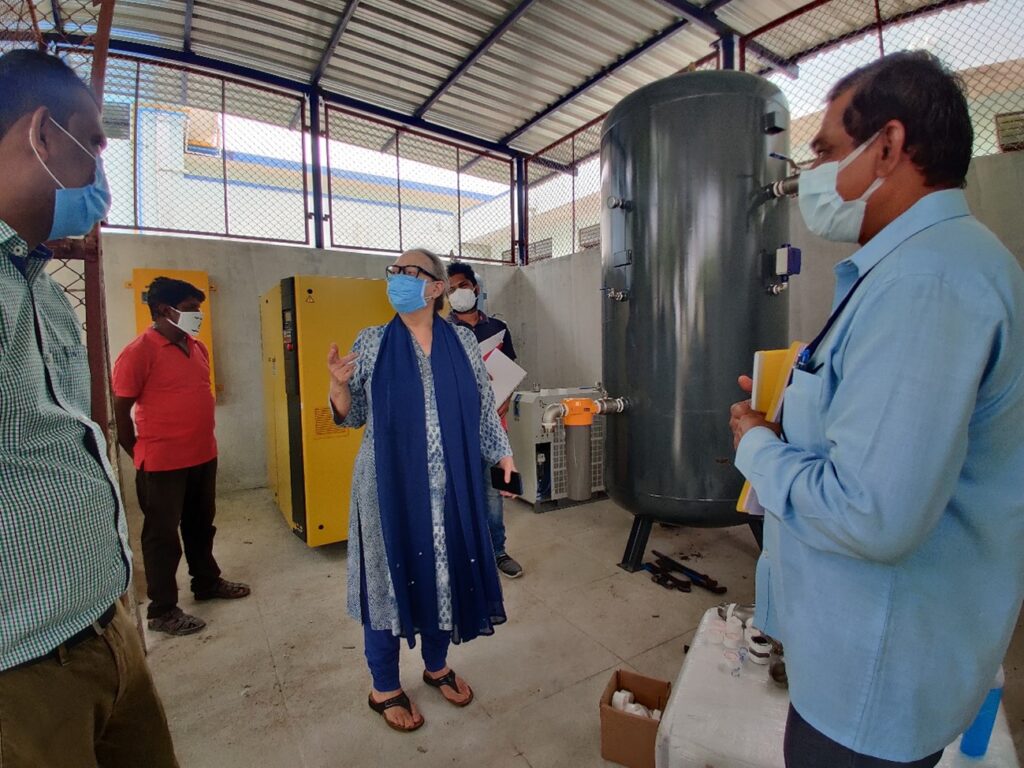Home > Blogs
Special Report on the Second Wave of COVID-19
Background:
The second wave of COVID-19 hit India this spring after an eight-month lull in infections. At the end of April 2021, new cases and the number of daily deaths began to increase sharply, with more than 350 thousand new cases reported in just 24 hours. People with COVID-19 began to gather at the doors of hospitals in India’s largest cities. The situation was initially worse in the North, but cases quickly began to spread south towards the areas that the Rural Development Trust, our implementing partner in India, serves.
Like the first wave, the second wave revealed a severe shortage of beds, drugs and oxygen in Indian hospitals. In response to the situation, the Indian government banned the use of liquid oxygen for non-medical purposes and ordered oxygen-manufacturing plants to maximize production to immediately make oxygen available to healthcare centers.
Less than a week later, India registered more than 400,000 new COVID-19 cases for four consecutive days. Given the 3.65 million active cases, the Supreme Court warned that the country should be prepared for a third wave of COVID-19 and emphasized the need to create oxygen reserves. The Supreme Court also asked the central government not to reduce the oxygen supply in Delhi – 700 metric tons – until new orders were received. The race to provide oxygen was tense, given the depletion of supplies at the international level.
India became the third country after the United States and Brazil to cross more than 300,000 COVID-19 deaths, though it is also important to highlight that India also has the highest number of recoveries in the world: more than 23 million people, or 99% of the infected population in the country have successfully recovered.
To reduce the number of infections, several states announced a total lockdown. On April 23rd, the state government of Andhra Pradesh announced a curfew lasting from 10 p.m. to 5 a.m. each night. Only essential and emergency services, such as health and medical services, could function during curfew. When infections continued to increase, the Andhra Pradesh government imposed a 14-day partial lockdown on the state that has been extended until end of June. Between 6 a.m. and 12 p.m., all commercial activity is allowed, but gatherings of more than four people in public places are prohibited. After 12 p.m., all companies, shops, establishments, offices, educational institutions, restaurants and other facilities must be closed and transportation is restricted. Only essential services are exempt from these measures.
Just like the first wave, the second wave has impacted millions of students across the country. The State of Andhra Pradesh announced the suspension of face-to-face classes for all students from first to ninth grade, though the education minister did not want to cancel exams and force students to miss another academic year. Last year, when final exams were canceled, most applications for high school and university were rejected because they did not include exam results.
Vicente Ferrer Foundation Relief Efforts:
In mid-April, the RDT Bathalapalli Hospital was again designated as a COVID-19 Hospital by the government of Andhra Pradesh. The hospital underwent a complete reorganization. Its entire capacity of 245 beds was repurposed to accommodate COVID-19 patients. This caused the Rural Development Trust to reorganize its efforts as well. Given the seriousness of the situation, the Vicente Ferrer Foundation and the Rural Development Trust decided to concentrate all their efforts on providing medical care to all patients who came to the hospital, putting a total of 400 workers at the service of the Bathalapalli Hospital. Their support enabled the hospital to add extra beds, bringing the total up to 307, though only 278 beds have oxygen
While the first wave mostly impacted older people, the second wave has severely affected young people between 20 and 40 years old. When patients arrive with COVID-19 symptoms, they are referred to the triage area. From there, depending on the diagnosis, they are either admitted to the hospital or sent home to self-isolate, so that the hospital facilities do not become overcrowded. Between April 19 and May 27, 2021, more than 1,700 people were admitted to the Bathalapalli Hospital. Since the beginning of the pandemic, more than 8,000 patients have been treated, an average of 150-200 patients per day.
80% of the patients treated at the Bathalapalli Hospital have required oxygen. This has presented a challenge for the health personnel of the Rural Development Trust, given the oxygen shortage in the country. Before the pandemic, oxygen cylinders had to be refilled once a week. Now, with the outbreak of the second wave, they have to be refilled every other day. The acquisition of oxygen generators has been vital to reducing the hospital’s dependency on equipment that, due to the shortages in the country, had to be purchased abroad.
Addressing the critical need for essential oxygen supplies, the Foundation launched “Mission Oxygen” campaign in India, the US, Spain and Germany. In the US, over 400 individual and institutional donors joined the campaign.
Because of your generosity and passionate support, we raised funds to provide over 200 oxygen cylinders, oxygen to refill existing cylinders, oxygen concentrators, medical materials, and protective equipment.
On May 7th, the first plane loaded with equipment and supplies left Barcelona, Spain bound for the RDT Bathalapalli Hospital. Subsequently, and at the request of the emergency committee of the Rural Development Trust in India, three more shipments were sent to Bathalapalli Hospital which included an oxygen generator, oxygen concentrators and other medical materials.
As we wrap up the Mission Oxygen campaign, we would like to express our deep gratitude for your generosity. Unfortunately, the COVID-19 situation in rural India remains serious. We hope you will continue to support to our hospitals as India braces itself for an inevitable 3rd wave.
Text adapted by VFF USA
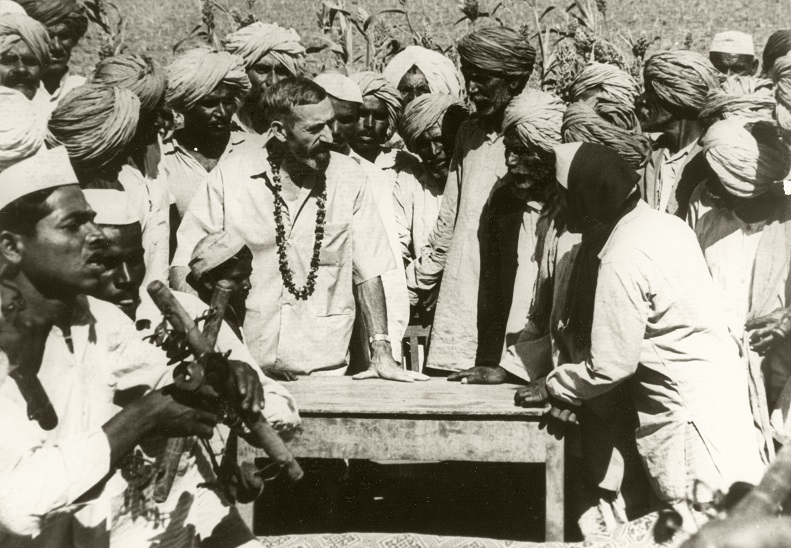
Commemorating 55 Years of the Rural Development Trust (RDT)
01/22/2024Today we commemorate the arrival of Anna Ferrer and Vicente Ferrer to Anantapur and the be...
READ MORE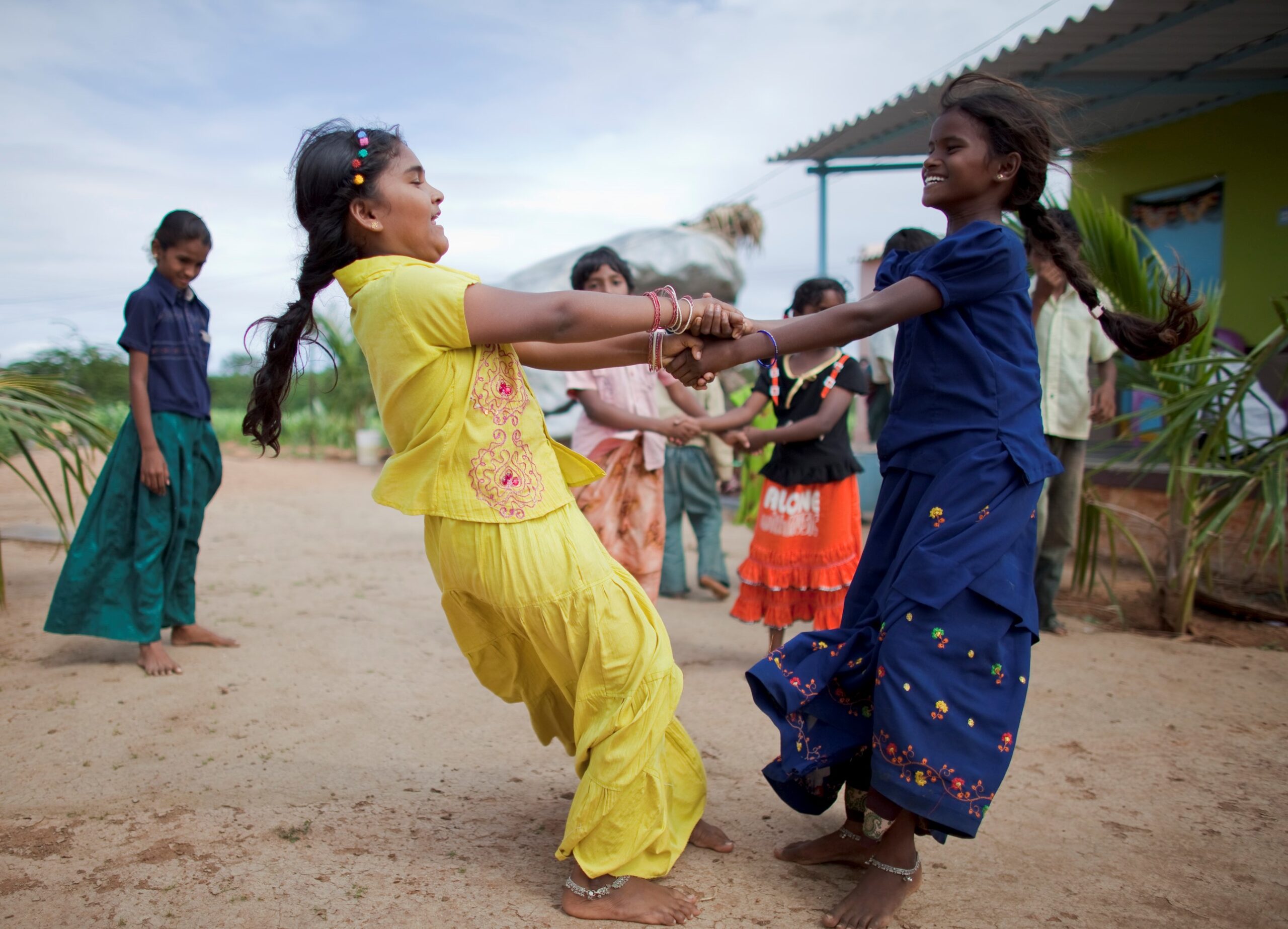
VFF USA & the SDGs: A Bastion of Hope by Suporna Chaudhuri
08/21/2023The United Nations’ Sustainable Development Goals (SDGs) comprise a mosaic of principles...
READ MORE
Empowering Dreams: VFF USA’s Journey at NATA Convention 2023
07/20/2023In the heart of Dallas, the NATA Convention 2023 was a lively gathering of people f...
READ MORESupport our work to help individuals and communities affected by COVID-19
Would you like to know how we use the funds?LEARN MORE
 June 28, 2021
June 28, 2021